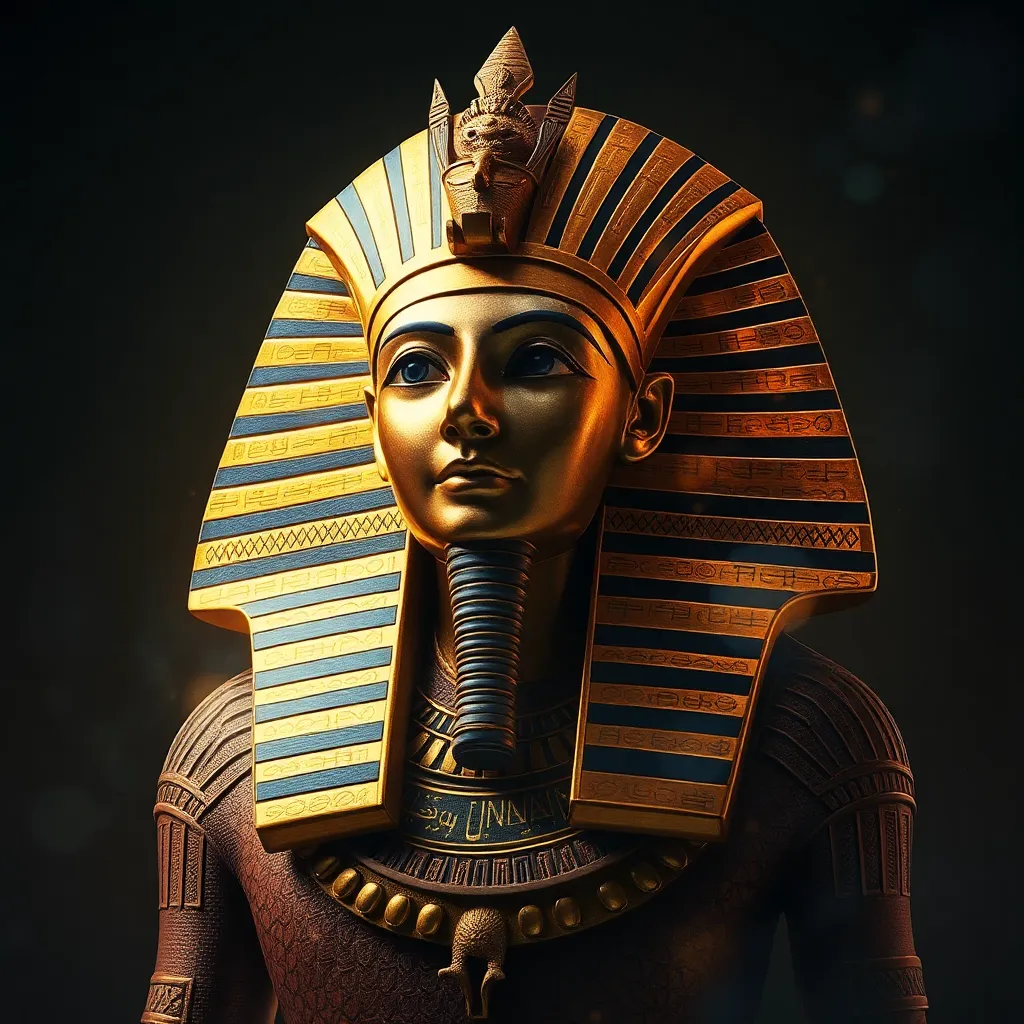Atenism and the Role of the Pharaoh in Religion
I. Introduction
Atenism, a monotheistic religious movement that emerged in Ancient Egypt during the reign of Pharaoh Akhenaten, centered around the worship of the sun disk, Aten. This unique form of worship marked a significant departure from the traditional polytheistic beliefs that dominated Egyptian religion for centuries.
The Pharaoh in Ancient Egypt was not only a political leader but also a central religious figure, believed to be a divine mediator between the gods and the people. This article explores the intersection of Atenism and pharaonic authority, shedding light on how Akhenaten’s reforms impacted the role of the Pharaoh in religion.
II. Historical Context of Atenism
Atenism emerged during the 14th century BCE, primarily under the reign of Akhenaten, who is often seen as one of the most controversial figures in Egyptian history. His religious reforms coincided with significant socio-political changes in Egypt.
- Emergence of Atenism: Akhenaten introduced Atenism as a means to centralize religious power and diminish the influence of the traditional priesthood.
- Comparison with traditional beliefs: Unlike the extensive pantheon of Egyptian gods, Atenism focused on a single deity, which represented a radical shift in religious thought.
- Socio-political factors: Economic and political upheaval during Akhenaten’s reign prompted a search for new forms of stability and identity, facilitating the rise of Atenism.
III. The Concept of Aten
Aten, represented as a sun disk emitting rays, symbolized life, light, and fertility. This representation highlights the sun’s vital role in sustaining life in Egypt.
- Aten as the sole god: Akhenaten’s reforms positioned Aten as the one true god, rejecting the worship of other deities.
- Significance of the sun disk: The sun disk symbolized not only physical light but also spiritual enlightenment, embodying the concept of divine presence in daily life.
IV. The Pharaoh’s Divine Authority
The Pharaoh held a unique position in Egyptian society, functioning as a divine intermediary who bridged the gap between the gods and the people. This role became increasingly pronounced with the emergence of Atenism.
- Mediator between gods and people: The Pharaoh was seen as the earthly representative of the gods, responsible for maintaining divine favor.
- Maintaining maat: The Pharaoh’s duty was to uphold maat, the concept of cosmic order, balance, and justice, which was essential for the stability of society.
- Redefinition of divine status: Atenism altered the Pharaoh’s divine status, emphasizing a direct relationship with Aten, rather than reliance on a pantheon of gods.
V. Religious Practices and Worship Under Atenism
The rise of Atenism brought about significant changes in religious practices and the structure of worship in Ancient Egypt.
- Temple practices and priesthood: Traditional temples dedicated to various gods were largely replaced or repurposed for the worship of Aten, leading to a decline in the power of the traditional priesthood.
- New religious sites: Akhenaten established a new capital, Akhetaten (modern-day Amarna), which featured temples and altars dedicated exclusively to Aten.
- Public worship: The Pharaoh’s image became synonymous with the worship of Aten, reinforcing his authority and divine status among the people.
VI. Societal Impact of Atenism
The introduction of Atenism had profound effects on various aspects of Ancient Egyptian society, including art, culture, and social structure.
- Effects on art and culture: Artistic representations during Akhenaten’s reign shifted to reflect a more naturalistic style, focusing on intimate depictions of the royal family and the sun’s rays.
- Changes in social structure: The power of the traditional priesthood diminished, leading to a more centralized religious authority under the Pharaoh.
- Response of the populace: While some embraced the new religious order, others resisted, leading to a complex societal dynamic during and after Akhenaten’s reign.
VII. The Decline of Atenism and Its Legacy
Despite its initial prominence, Atenism experienced a decline following Akhenaten’s death, leading to a restoration of traditional polytheism.
- Restoration of traditional beliefs: Successors like Tutankhamun reinstated the worship of the old gods, dismantling the structures established by Atenism.
- Impact on subsequent religious thought: Atenism influenced later religious concepts, especially the idea of a singular divine authority.
- Modern interpretations: Scholars continue to study Atenism, examining its implications for understanding the evolution of monotheistic thought.
VIII. Conclusion
Atenism represents a fascinating chapter in Ancient Egyptian history, illustrating the complex interplay between religion and pharaonic authority. The transition from polytheism to a singular worship of Aten under Akhenaten not only redefined the role of the Pharaoh but also left a lasting impact on Egyptian culture and religion.
As we reflect on the significance of these religious shifts, it becomes clear that Atenism, while short-lived, contributed to the broader narrative of religious evolution in human history. Its legacy continues to be a subject of interest and debate among historians and theologians alike.




